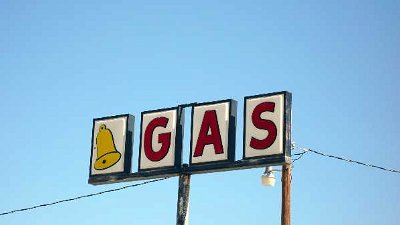20. In the Spring of 1970, four California police officers, James E. Pence, Roger D. Gore, Walt C. Frago, and George M. Alleyn, made headline news in what has become known as "The Newhall Incident". What happened on that fateful evening?
From Quiz Police Investigator II : Case Review
Answer:
the four officers were killed in the same gun battle
This tragic episode in California law enforcement history unfolded on a Sunday evening, April 6, 1970, in the small community of Newhall, about 35 miles north of Los Angeles.
Case Particulars:
Two California Highway Patrol officers, Walt Frago and Roger Gore, were on routine patrol when they monitored a broadcast on their police radio, of a vehicle traveling in their area that possibly contained an occupant who had been seen brandishing a firearm. The officers spotted a vehicle matching the description given, radioed for assistance (back-up), and proceeded to initiate a "traffic stop" of the vehicle in the parking lot of "J's Coffee Shop and Standard Station", just off of the Interstate 5 freeway. Once stopped, the officers approached the vehicle, one officer on each side of the vehicle. The door on the passenger side unexpectedly swung open, and the passenger exited the vehicle, pointed a gun at Officer Frago, and fired two shots, point blank, striking him in the chest. Frago was killed instantly. Officer Gore, who was on the drivers side of the vehicle, surprised by the sound of the gun shots, pulled his service weapon, and fired one shot at the suspect. At the same time, the driver of the vehicle fired two shots at Gore, mortally wounding him. Within seconds, the back-up police unit arrived. Not seeing either the suspects or the fallen officers, the two responding officers, James Pence and George Alleyn, immediately found themselves under gunfire. Officer Pence was able to radio what would be his last radio message, "11-99" (officers need help) "shots fired". Following a brief, violent gun battle, both officers were killed, and the two suspects escaped.
The two gun battles lasted less than five minutes total.
Law enforcement officers in the area flooded the location and launched a massive dragnet. Some eight hours later, the suspects were located, barricaded in a house, nearly four miles from the original shooting scene.
Officers from the California Highway Patrol and the Los Angeles County Sheriff's Department quickly surrounded the house. When a sheriff's department tactical team breached the house, one suspect, Jack Wright Twining, committed suicide by placing the muzzle of the shotgun he had taken from Officer Frago under his chin, and pulling the trigger. The second suspect, Bobby Augustus Davis, surrendered, and was taken into custody.
Final outcome/Disposition of Case:
* Bobby Davis, was convicted of four counts of murder, and sentenced to die in the California Gas Chamber.
In 1972, the California Supreme Court ruled the death penalty to be "cruel and unusual" and Davis' sentence, along with those of all other inmates on California's death row, was commuted to a "life sentence".
* A thorough investigative review of the incident resulted in sweeping changes in law enforcement procedures, especially regarding the stopping and approaching of hi-risk or felony subjects, the use of bulletproof vest, and methods used to place suspects under arrest.
* CHP Officer James E. Pence was killed in the line of duty. (gunshot wound)
* CHP Officer Roger D. Gore was killed in the line of duty. (gunshot wound)
* CHP Officer Walt C. Frago was killed in the line of duty. (gunshot wound)
* CHP Officer George M. Alleyn was killed in the line of duty. (gunshot wound)
* Jack Wright Twining, suspected killer of four CHP Officers, died of a self-inflicted gunshot wound to avoid capture by law enforcement officers.
 Many sounds of the 20th century are no longer heard in the 21st century. Can you use the photo clues to identify the sounds that were once heard in the USA, but have disappeared at this point?
Many sounds of the 20th century are no longer heard in the 21st century. Can you use the photo clues to identify the sounds that were once heard in the USA, but have disappeared at this point?  Quick Question
Quick Question = Top 5% Rated Quiz,
= Top 5% Rated Quiz,
 Top 10% Rated Quiz,
Top 10% Rated Quiz,
 Top 20% Rated Quiz,
Top 20% Rated Quiz,
 A Well Rated Quiz
A Well Rated Quiz